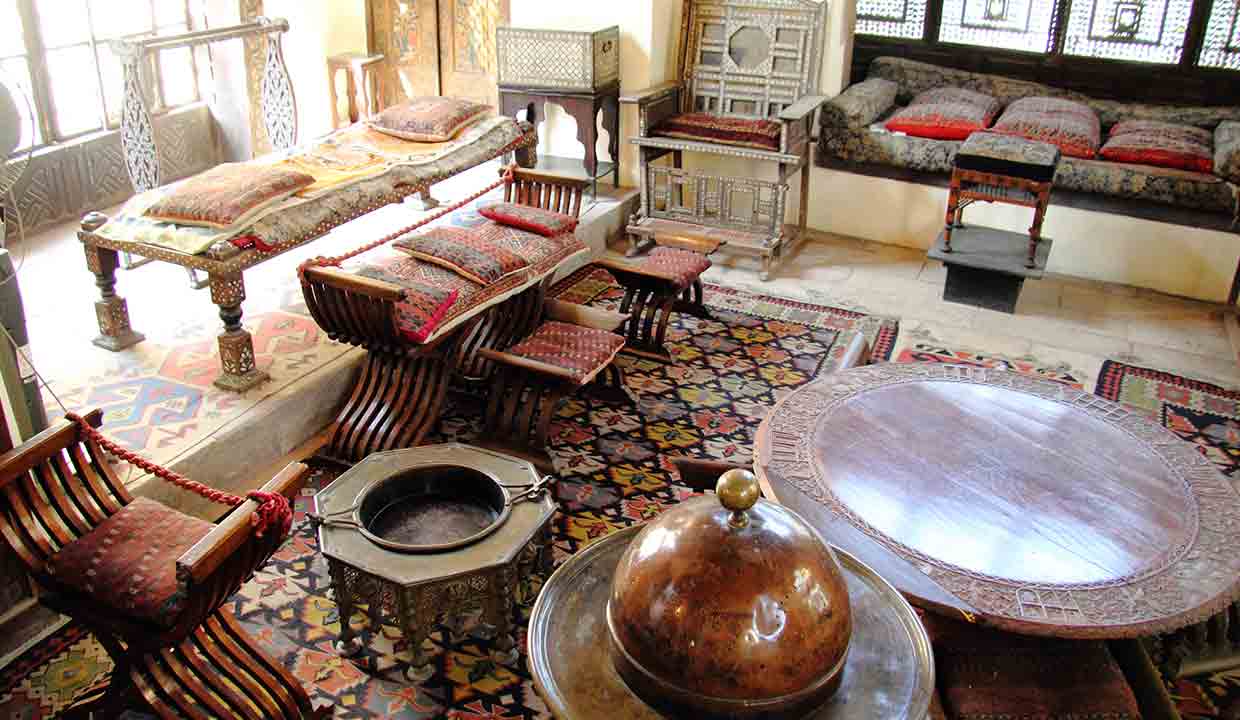Discover the magic of the Gayer Anderson Museum, a treasure trove of art, history, and exquisite design.
Nestled in the heart of Cairo, the Gayer-Anderson Museum stands as a testament to Egypt’s rich history and cultural heritage. The museum, which is located adjacent to the ancient Mosque of Ahmad ibn Tulun in the Sayyida Zeinab neighborhood, is a hidden gem that attracts art aficionados, historians, and travelers from around the world.
The Historical Abode
Before it was a museum, the structure was the residence of two distinct houses built in the 16th and 17th centuries. These houses, which were joined by a bridge on the third floor, have withstood the test of time, giving visitors a rare glimpse into the architectural and interior design trends of the era. The ornate wooden balconies, intricate mashrabiya screens, and expansive courtyards transport visitors back in time, offering them a window into Cairo’s luxurious past.
Major Robert Grenville Gayer-Anderson
The museum takes its name from Major Robert Grenville Gayer-Anderson, a British army officer and avid art collector who lived in Egypt between 1906 and 1942. Upon his retirement, Gayer-Anderson was granted permission by the Egyptian government to reside in the house, where he took it upon himself to restore and preserve its original splendor. Throughout his stay, he adorned the residence with a vast collection of art, furniture, and curiosities from around the Middle East and North Africa. In 1942, Gayer-Anderson bequeathed the house and its contents to the Egyptian nation, leading to its transformation into a museum.
The Museum’s Collection
Visitors to the Gayer-Anderson Museum are treated to a diverse array of artifacts, reflecting both the Major’s personal tastes and the broader artistic traditions of the region. Among its treasures are:
- Islamic Art: Exquisite rugs, ceramics, and glassware showcasing the rich legacy of Islamic craftsmanship.
- Furniture: Authentic pieces ranging from ornate divans and chairs to beautifully crafted wooden chests and cabinets.
- Sculptures: A wide range of sculptures, some dating back to the Pharaonic period, showcasing Egypt’s ancient artistic prowess.
- Paintings and Drawings: A collection that spans different eras and styles, offering insights into the evolving art scene of the Middle East.
- Curiosities: Major Gayer-Anderson had a penchant for the unusual, leading to a collection of curiosities ranging from mummified animals to ancient weapons and astrological tools.
Cultural Significance
Beyond its role as an art museum, the Gayer-Anderson Museum stands as a symbol of cultural preservation. In an ever-modernizing world, such establishments play a pivotal role in keeping the historical and artistic spirit of past eras alive. The museum provides an oasis of history in the bustling city of Cairo, giving locals and tourists alike a space to reflect on Egypt’s diverse and storied past.
In Conclusion
The Gayer-Anderson Museum is more than just an art museum; it’s a living testament to Egypt’s rich tapestry of history, art, and culture. A visit offers not only a chance to marvel at unique artworks but also an opportunity to step back in time and immerse oneself in a bygone era of luxury and grandeur. Whether you’re an art lover, history buff, or just a curious traveler, the Gayer-Anderson Museum promises a captivating experience that stays with you long after your visit.
